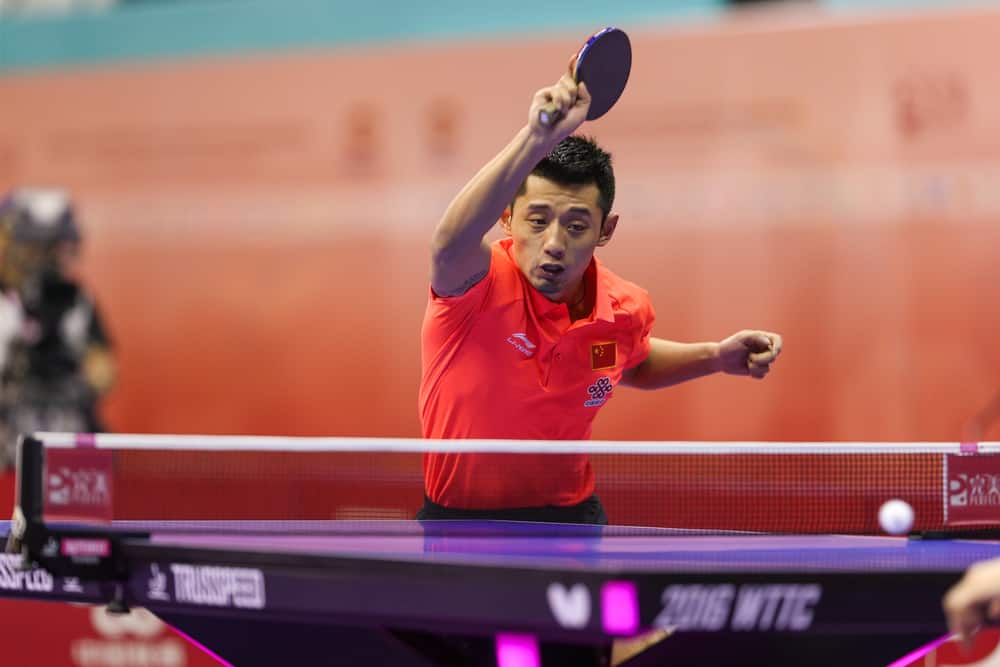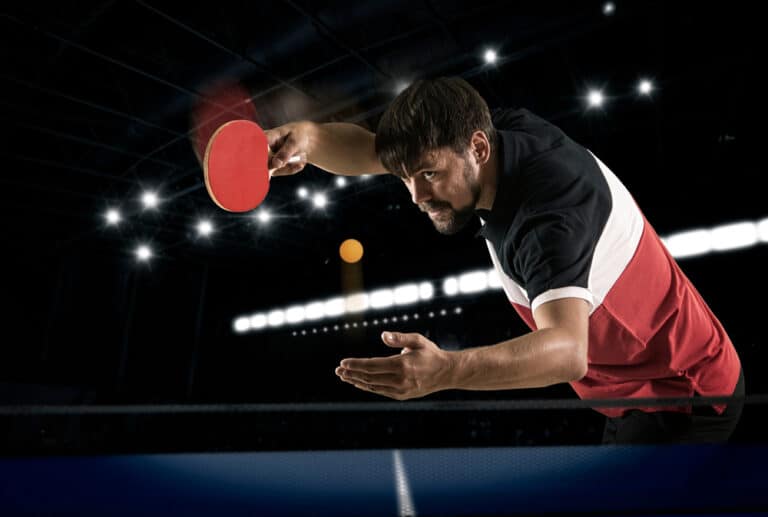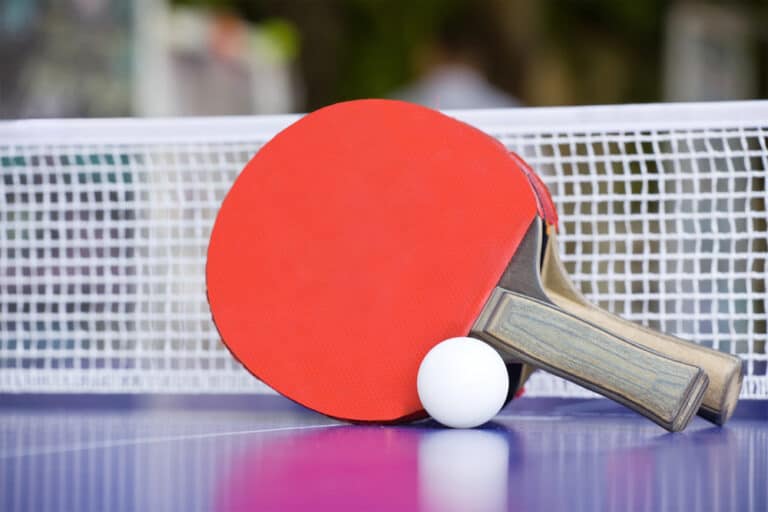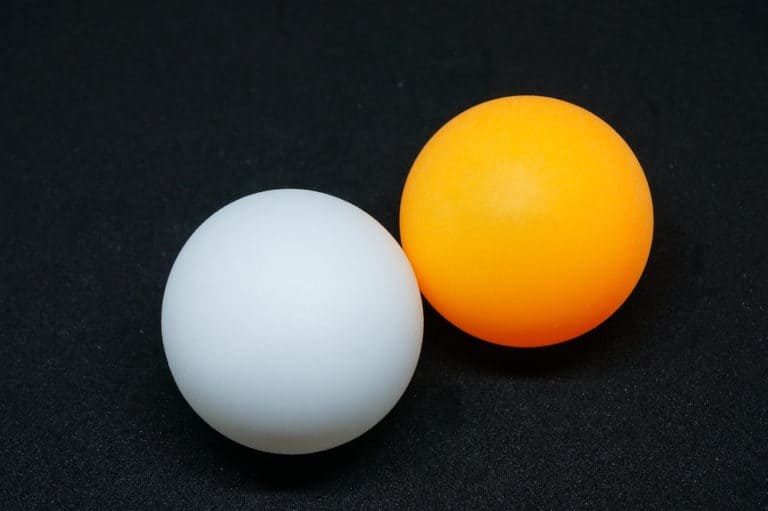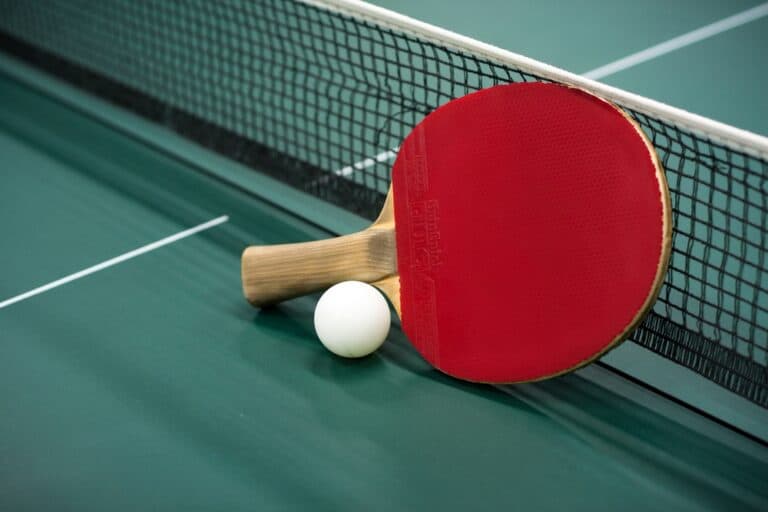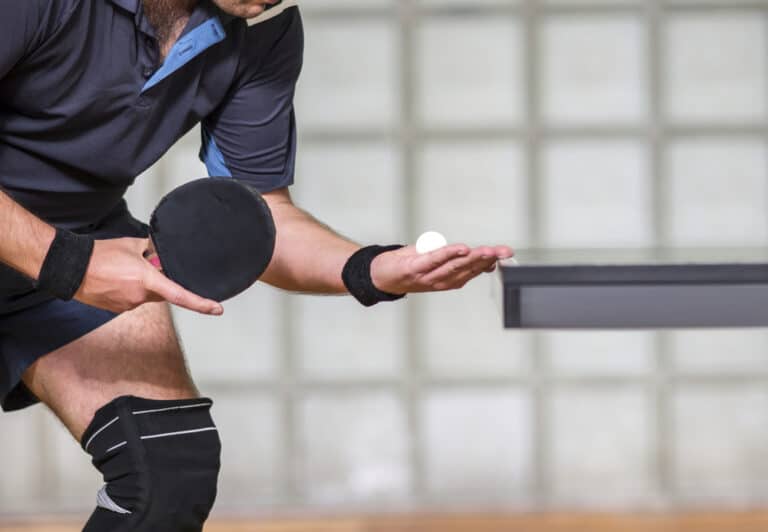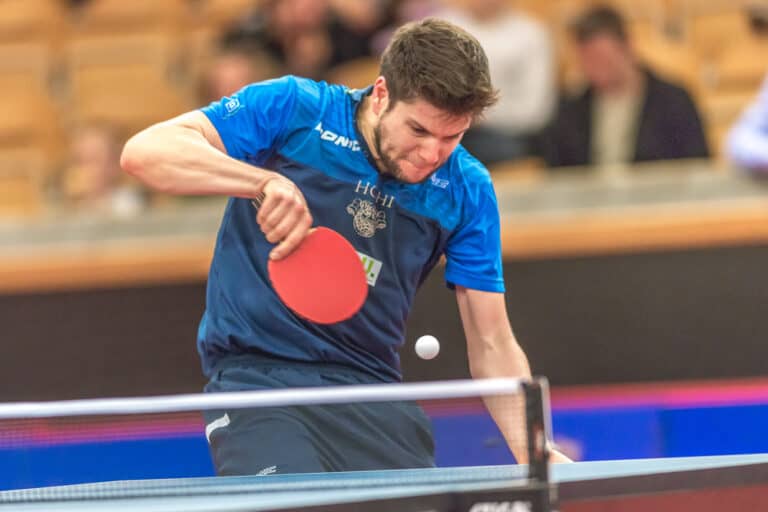Why Is A Smash Important In Table Tennis?
There are various different strokes played in table tennis, but a smash is considered one of the more advanced ones. It consists of hitting the ball quickly and powerfully and requires lots of practice to perfect.
A smash is important in table tennis because it forces your opponent away from the table and is a powerful attempt to win a point and finish the rally. The forehand smash is a well-known offensive stroke in table tennis. A player needs force, precision, timing, and technique to play this stroke.
Players usually play the smash stroke when the returned ball bounces to shoulder length or higher. Enough speed and force are required for a smash, and a player must practice all kinds of techniques and positions to do it successfully.
Why Is A Smash Important In Table Tennis?
The smash in table tennis, more well-known as the forehand smash, is a crucial stroke in the game. It is important because the stroke aims to force your opponent further away from the table while you try to win a point. When a smash is played in table tennis, it considerably lowers the chances that the opponent will be able to return the ball.
If they can return the ball, it is usually weaker, so the player has the upper hand. It is a hard and fast strike of the ball, usually played when it bounces very high above the net.
This type of stroke is called a lob – the ball from your opponent has bounced high over the net. It is a perfect opportunity to play a smash. Every player should know how to play this stroke and when to utilize it. However, this stroke is not all about power. Players must practice it to perfect the timing, force, technique, and accuracy.
Because it is quite a powerful move, players can easily miss the mark on the table. Therefore, this move is essential in table tennis to win a point over your partner and play with the required skill. Also, your opponent may return another lob, so you’ll need to be ready to play a few smashes in a row.
How To Play A Smash In Table Tennis
There are three different stages to playing a smash successfully. These are called the backswing, the strike, and the follow-through. These are the steps for a typical forehand smash in table tennis. Practicing these steps in succession will help you achieve the correct stroke and potentially win a point.
Stage 1
Firstly, your opponent will return the ball, and if this is in a lob, it is perfect for playing a smash. However, it doesn’t always have to be a lob stroke. The most important part of this stage is your positioning.
Players must stand on the balls of their feet, with slight flexion in the knees. The body should be positioned so the shoulder points toward the target, but the player faces sideways. For instance, if you are right-handed, your right foot will be slightly behind the left as you face sideways.
Then, shift your body weight so that it is more towards the back foot in order to generate the power required for the smash. Now is the time to prepare your arm for the forehand smash. In the instance of being right-handed, bring the right hand in line with the ball’s path with the racket in a high position.
This position is also called the start position, where the racket is around shoulder height, and the face of the racket is facing the opponent’s side.
Stage 2
You are ready to strike the ball in a smash stroke at this stage. Your body, legs, and arms have been brought into the correct position to hit the ball in a downwards and forward motion. Once the ball has bounced off the table, swing your body slightly backward to produce the force to go forward and shift the weight from the back foot to the front foot.
During this stage (the strike), there is a fluid movement of the body where the shoulders, upper body, and hips have turned to be in the correct position. This position is required to strike the ball with the racket in a smash. Once the ball reaches the top of its bounce or is at shoulder height, the player should hit the ball.
Some may prefer to hit the ball when it is not yet in its highest position after the bounce. The exact movement is up to each player and how they can strike the ball in the best way possible in a smash. Generally, hitting the ball when it is a bit lower is riskier, but it will give the opponent less time to react and increase your chances of getting the point.
Stage 3
Now that the smash stroke has been played, it is essential to consider the follow-through. During the entire stroke, the player’s body should be moving forward and through the stroke. Your arm is now in the forward position in front of your head towards the opponent’s side.
All movements during phases 1, 2, and 3 should be flowing movements before returning to the ready position for the next shot. They should collectively be a fluid movement to get the most out of your shot. A good tip for recovering faster from a smash is not allowing the racket to cross the center of your body. In this way, you can return to the ready position in a quicker manner.
Variations In A Forehand Smash
Sometimes the returned ball is too high, even if the player already has their racket above shoulder height. In this instance, you could jump to reach the ball and smash it. However, it is riskier, and many players would prefer to wait for another opportunity to play the smash stroke.
How To Get Better At A Forehand Smash In Table Tennis
Positioning the feet and the body is vital to playing a successful smash. Often players will not do this correctly in the time they have before playing the shot. This timing can be pretty short, especially in a fast-paced game, requiring some practice.
The correct positioning (towards the side and not facing straight toward the opponent) will help generate enough power to play a smash. If the ball is hit when the arm and racket are too high (above shoulder height), it can cause a downward movement into the net. Players will play a better smash if the momentum is going forward rather than downwards.
While practicing, players can also exaggerate transferring their body weight from the back to the front leg to get enough force and speed behind the stroke. The power behind the smash is a critical part of the stroke, as it is the primary component that may get you a point. Without enough speed and strength, the opponent will more easily be able to return the ball.
When you hit the ball with your racket, it must hit the ball with a clear flat contact. Because smash stroke is all about speed and power and not about spin, the ball shouldn’t brush the racket or make uncertain contact.
However, many players try to hit the ball too hard, and this also has disadvantages. If the ball is hit too hard, it will miss the table. Once again, positioning is vital, and if you are not in the correct position fast enough, it may be better to play a different stroke and attempt a smash the next time.
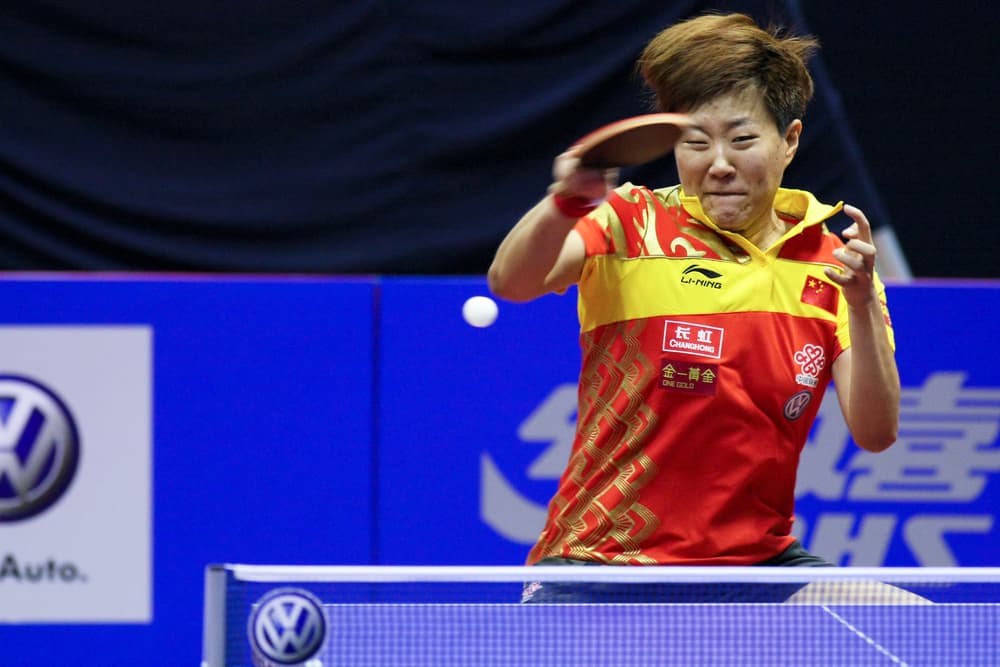
The Backhand Smash In Table Tennis
The backhand smash is much less commonly played than the well-known forehand smash. In fact, it is suggested that you shouldn’t play it very often at all. Usually, there is enough time to do the standard forehand smash when the ball is too high.
The forehand smash has several advantages over the backhand smash. When facing the ball, lifting or lowering your arm to the position required to smash the incoming ball is much easier. However, in the backhand position, moving your shoulder to any position is much more challenging, especially the higher you go.
The strike and follow-through phases of the smash are also more difficult in the backhand position as your body can not rotate as much. However, the backhand smash has its place in table tennis when for whatever reason, a player cannot get into position quickly enough and is forced to play this stroke.
As with the forehand smash, the backhand smash in table tennis is played specifically when the ball bounces very high. There are other backhand strokes that you can play when the ball is lower, such as the backhand topspin or the backhand counter hit. The backhand smash needs to be much faster than the other strokes.
How To Play The Backhand Smash
Starting position is important; similarly, the racket needs to be relatively high, about shoulder height or above, if possible. The player’s body is turned sideways, so there is enough space to rotate towards the ball and forwards.
In the backhand smash, there will be enough speed and force if there is enough rotation. Again, flat and clear contact with the ball is necessary during the strike. A good connection is essential for the ball to travel back to your opponent with good speed and no spin.
After contact with the ball, the last phase is the follow-through. The arm should swing all the way through the front and around. Because the backhand smash has a different arm position, the wrist should be relatively relaxed. If the wrist remains too stiff, then the player won’t be able to use the speed and force that the wrist can give in this movement.
How To Return A Smash In Table Tennis
The smash is an important stroke in table tennis, but on the receiving end, it is just as important to attempt to return it. You’ll need to know how to defend if your opponent uses a smash. The best way is lobbing – which is the same stroke played just before a smash.
The ball is returned so that it bounces high above the net, which can make it challenging for the opponent to return it with another smash. The lob requires you to position yourself so that the right foot is behind the left (if you are right-handed) with the racket in a lower position.
With a correct smash from your opponent, the ball will come with a quick speed, so you’ll have to move and think fast. Hit the ball with good contact as you raise your arm, trying to hit it at its highest point, as it will be the slowest at this point. The correct technique should result in a lob on the opponent’s side.
It can be difficult to return a good smash from your opponent. Players need to have excellent reaction times and skill. Moving slightly away from the table can help players to position themselves to return the ball with a lob. Several things must happen simultaneously, like using the right angle with the correct speed and timing.
The anticipation of a smash can help prepare for it. Awareness of your opponent’s body language and style of playing can help set you up for the returning shot. All of these different factors are why playing a smash can be so crucial in table tennis because players know it is a difficult stroke to return.
Conclusion
A smash is an essential stroke in table tennis as it is a powerful and quick play that aims to make it challenging for the opponent to return. It is played with the goal of winning a point. A successful smash is very difficult for players to return correctly.
A forehand smash is the most common type and is played by hitting the ball with force and speed when it has bounced relatively high. Players must practice the technique, timing, and correct power to play a proper smash stroke.

